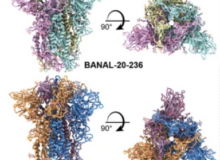by Jonathan Latham, PhD
The GMO labeling issue has quieted down some but there is still plenty to discuss. Just this week the USDA proposed to redefine GMOs with new loopholes for gene editing. However, it is also possible for reasonable people to imagine that GMO labeling is a sideshow to the real business of the food movement. After all, most GMO foods and GMO crops are visually indistinguishable from non-GMOs, and tiny non-GMO labels can look pretty irrelevant on the side of a soda bottle containing whole cupfuls of sugar. Last week, Michael Pollan, Olivier de Schutter, Mark Bittman and Ricardo Salvador made that error, calling GMO labeling “parochial“. Granted, they wrote “important but parochial”, but qualifying the significance of GMO labeling in any way was a mistake.
The first issue is that GMOs are legally distinct from non-GMO crop varieties. They possess an enhanced legal status that has enabled GMOs to become a gushing profit centre for agribusiness. These rights not only allow their owners to steer farmers’ herbicide use, which also increases profits, they can also legally prevent independent research which would otherwise show up their advertising claims. The share price of Monsanto reached $142 in 2008, reflecting the enormous profitabilitys of massively increasing seed prices on the back of GMO introductions.
Those profits have in turn fuelled a set of key agribusiness activities. One was the acquisition of almost the entire independent global seed business, which now resides in very few hands. The second was a cluster of enhanced PR and lobbying activities that were necessary to defend GMOs. Rather than hide in the shadows agribusiness corporations needed to come out swinging in defence of the indefensible, which necessitated, among other things, a much higher degree of control than previously over teaching content and research at public universities.
Thus their special legal status enabled an unprecedented ability to control both the present and the future of agriculture.
GMOs are also conflated with science and thus progress. They have the intellectual role of presenting agribusiness as the innovative and dynamic frontier of agriculture, in contrast to those people who base their efforts on ecological diversity, local expertise, or deep knowledge. This cutting edge image is key to the agribusiness business model of reaping tax breaks and subsidies (Lima, 2015).
All around the world, taxpayer money supports and subsidises agribusiness without which benefits it would not exist (Capellesso et al., 2016). In the final analysis, however, the GMOs-as-progress argument is circular. Agribusiness is innovative because it uses GMOs and GMOs show how innovative they are. Smoke and mirrors, but politicians fall for it every day, delivering massive transfers of wealth every year from the public to the private sector (Lima, 2015).
The biological truth of GMOs is equally disturbing. At one end of the food chain are the crops in the field. Many people have noticed the virtual disappearance of Monarch butterflies. There are three leading explanations of this disappearance. The loss from farmland of their larval host plants, milkweeds, is one possibility; poisoning of their caterpillar larvae after consuming insecticide-filled pollen from Bt insect-resistant GMOs is a second; and toxicity from the neonicotinoid pesticides used to treat GMO seeds is the third. The first two both stem directly or indirectly from GMO use in agricultural fields since before GMOs, milkweeds could not be eradicated and now they can. Most likely is that all three causes are true and that along with milkweeds GMO agriculture also decimated, or eradicated entirely, many other species too.
Monarchs are lovely, but they are not otherwise special. Their significance is as sentinels. Planting milkweeds and pollinator way stations to specially preserve a sentinel species does not rescue an agricultural ecosystem, but it will mask the symptoms. Agribusiness is right now hoping that no one will notice the difference, and that by bringing back monarchs it can obscure the facts of their killing fields.
Internationally too, GMOs threaten to transform agriculture in places like India where millions of people who make a living by labouring in fields could be displaced by herbicide-tolerant crops such as mustard.
At the human consumption end of the food chain, if you live in the US, no one is protecting you from potential health hazards due to GMOs. Makers of GMO crop varieties don’t even have to notify the FDA of a new product. And if the maker deems the product is not a pesticide they don’t have to notify the EPA either. Trump won’t make it worse because it can’t be worse. It is non-partisan contempt for public health.
What are those potential health hazards? One important example is the famous (or infamous) rat study of NK603 corn by the French research group of professor Gilles-Eric Séralini . It is the only longterm study of the effects of GMOs on a mammal. If you ignore the tumours that most people focused on, the study found major kidney and liver dysfunction in the treated animals (Séralini et al., 2014). This dysfunction was evident from biochemical measurements and was also visually apparent under the microscope. These results are of no interest to US regulators, even in principle, since they fall between jurisdictions.
From this we can conclude that GMOs are often harmful, directly and indirectly, and further, that they are the leading edge of the business model of agribusiness.
The question, however, was labeling. Imagine that organic food was not allowed to be labeled. Would there be such an organised and powerful challenge to industrial food? What labeling does for the agriculture and food system is to allow the public to express its dismay and disagreement with the direction of corporate agriculture and assert their democratic rights to protect themselves. Labeling allows the public to engage with specific policies and products within the vast complexity of the food system and push back in a focused way against corruption and dishonesty, in real time. There aren’t too many chances to do that in America today.
References
Capellesso AJ, Ademir Antonio Cazella, Abdon Luiz Schmitt Filho, Joshua Farley, and Diego Albino Martins (2016) Economic and environmental impacts of production intensification in agriculture: comparing transgenic, conventional, and agroecological maize crops. AGROECOLOGY AND SUSTAINABLE FOOD SYSTEMS 40: 215–236. Lima T. (2015) Agricultural Subsidies for Non-farm Interests: An Analysis of the US Agro-industrial Complex. Agrarian South: Journal of Political Economy 4(1) 54–84o-industrial Complex
Séralini G-E, Emilie Clair, Robin Mesnage, Steeve Gress, Nicolas Defarge, Manuela Malatesta, Didier Hennequin and Joël Spiroux de Vendômois (2014) Republished study: long-term toxicity of a Roundup herbicide and a Roundup-tolerantgenetically modified maize. Environmental Sciences Europe 26:14 DOI: 10.1186/s12302-014-0014-5



